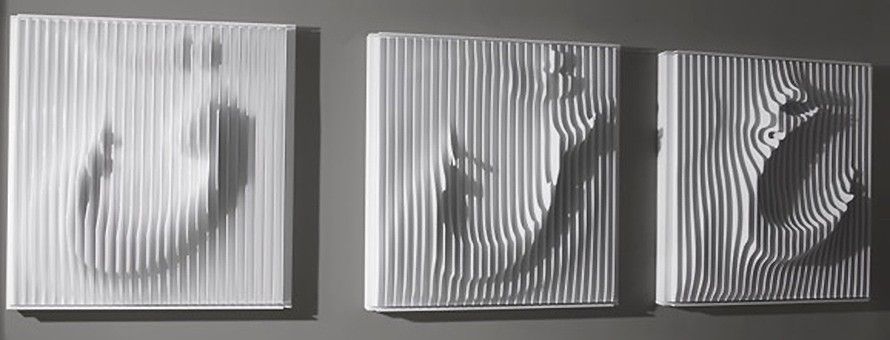By Tara Biglari
Ramin Shirdel is an Iranian-born architect-turned-sculptor who lives and works in Tehran. Born in 1981, the artist has shown in galleries across the world, and his unique take on sculpting has won praise from collectors and viewers alike. Shirdel makes thought-provoking sculptures out of wood, which draw inspiration from both East and West that represent words in English and Farsi.
An exhibition of his works recently opened at the Sophia Contemporary Gallery in Mayfair, London. Titled “I Am Transforming Into You,” the show will run through September 15th. Kayhan Life caught up with the gallery’s co-founder Vassili Tsarenkov for a discussion about the exhibition.
Why have you chosen to show the works of Ramin Shirdel?
We had a group show last summer and he was one of the featured artists. We had about seven or eight other artists in the exhibition, Iranians and Europeans. The show did well, but Ramin was by far the most successful. There was such a great reception from collectors everywhere that we decided to give him his own show.
What do you like about his art?
His sculptures are very distinctive. As you can see, it’s Pop, which is something we haven’t really been showing at the gallery.
What I also find interesting is that he is an architect by trade. He has designed several buildings in Dubai and Tehran, and received awards for his designs. He really started making sculptures as a side job. He started using this technique of layering that [is used in] the façade of buildings. Ultimately, his sculptures were so successful that he became a full-time sculptor.

His art is very international. Some of the works are in Farsi, some are in English. He looks up to traditional sculptors both in the Western world and in Iran, and you can really see their influence in Ramin’s practice. On the one hand, there is Robert Indiana, the American Pop sculptor, and on the other there is Parviz Tanavoli, who is probably the greatest Iranian sculptor of all time. It’s interesting to see the disparate influences taking shape in his work, which fit into the gallery’s broader goal of using art to bridge East and West.
Your gallery puts on regular shows of contemporary Iranian art. What do you find interesting about it?
What I find interesting about Iranian art is the variety. When I first travelled to Iran, I was really surprised to see the breadth and diversity of Iranian artists. Iranian artists are like artists everywhere – they touch on numerous issues, use different media, and so on. Tehran is arguably the most dynamic and lively art market in the Middle East, so it’s exciting to show how rich contemporary Iranian art really is within the context of the London art world.
What we are also trying to do with the gallery is showcase another side of Iranian art that people probably overlook in the West. Most often, one sees work that conforms to the expectations of the Western public – political [work], calligraphy, things that have to do with the veil – essentially, [subjects that] Westerners first think of when thinking of the Middle East.

Do you have other Iranian art shows planned in the near future?
We actually have two upcoming shows with Iranian artists. The first will be a show of Afruz Amighi’s work, from November 2017 to January 2018. She’s a great artist, and the first recipient of the prize for contemporary Islamic art at the Victoria and Albert Museum. Her works are in many museum collections, such as those of the British Museum. Amighi is, like Shirdel, inspired by architecture, and creates sculptures that merge Western and Eastern styles.
The second show will be in the spring of 2018: a display of the works of the Iranian and U.S.-based artist Taha Heydari. He works with digital imagery, and his art mainly deals with how the media influences mainstream perceptions of conflicts, regions and politics. Heydari often takes images of conflict in the Middle East and manipulates them with software, creating a metaphor for how the media distorts the reality of conflicts, and has an underlying agenda. He is a very exciting young artist who symbolizes a global movement towards digital. [He illustrates] how having computers, [Adobe] Photoshop and all these new tools are changing the sheer nature of art.

